
Whilst the mainstream might occasionally nudge the boundaries, it’s always the smaller, more agile and – let’s be honest – slightly crazy ones who really push the frontiers. It’s ever been so, and in particular the 1960s was a period when leftfield innovation flourished. It was when the likes of Colin Chapman at Lotus and Enzo Ferrari were ripping up rulebooks and beating the establishment with the remains. British Racing Green against Ferrari Rosso Corsa… but then there’s also the French Racing Blue of Matra.
Matra deserve to be held in the same regard. They were without doubt innovators, they enjoyed dizzying success in an incredibly short period of time and even better they injected a healthy dose of Gallic eccentricity into everything they did.

With their patriotic blue racecars and latterly screaming V12 hearts, Matras flew the flag for France on the world stage, whilst also creating a range of road cars in the background that were anything but boring or predictable.

Never really heard of Matra? I wouldn’t be surprised. Like so many legendary teams of years gone by, their star burned brightly but briefly: starting in the mid-’60s, their glory period in motorsport was hemmed in by the ’70s. By the ’80s they were stifled by frequently changing management and by the ’90s their creative talent was limited to under-the-counter skunkworks, which often went unappreciated at the time. For instance, the Espace MPV. Matra made the prototype half a dozen years before it was taken up by a manufacturer.

Then there are the famous drivers that drove Matra racing cars; there were the pioneering composite bodies; world-beating single seaters; mid-engine road-cars; ultra-slippery speed machines born to fly down the long straights of Le Mans; electric town-cars; three-seater lightweight sportscars; outlandish concepts and more…

But I’m getting ahead of myself. All this and more was waiting to be discovered in the Matra museum, based in the quiet town of Romorantin, south of Paris.
CHAPTER TWO
From Missiles to Motorcars
The Matra name is synonymous with Romorantin. During its heyday the company employed 3,000 people and contributed almost a quarter of the tax income of the town. By the end there were just 100 staff in the road car division, maintaining spares and making electric bicycles.
Now, Matra only exists as a military contractor (returning to its roots), based in Vélizy near Paris. Interestingly for photography buffs, the current museum building wasn’t actually part of the Matra campus, instead being the previous home to the old Beaulieu camera factory.

The origins of the company (Mécanique Aviation TRAction) hardly suggested that they would win one in three races they entered, the Formula 1 World Championship in their second full year of trying and take three victories at the Le Mans 24 Hours.

In the 1950s, Matra had made their name in defence contracts, specialising in missile systems. But the company’s founder, Jean-Luc Lagardère, set his sights on something very different when he purchased the assets of René Bonnet’s ailing automobile firm, DB, in 1965. Missiles in the sky would become missiles on track.

Motor racing figured from the start, with Lagardère wanting to use the cauldron of competition to show off the Matra brand. It all started with the 1965 MS1 F3; a quote from the man himself is painted on the museum wall: “Formula 3 to learn, Formula 2 to harden and Formula 1 to win.” The aim was clear.

Matra’s sportscar roots were also laid down around this time with the 610 Prototype, although it took part in road rallies to begin with. Interestingly, it used a 1.6-litre Lotus Twin-Cam under the polyester bodywork.

Cosworths powered the first cars, before a tie-up with Graham Hill led to BRM engines for the 1966 MS5 Formula 2 racer – the London Rowing Club stripes on the nose give it away – which also marked their first races in Formula 1.

Le Mans had to be entered: for a French team it was almost a patriotic duty. Matra’s homegrown engine artistry was still being developed, so the 1966 MS620 sports prototype shared the BRM power of the F2, thought this time in F1-derived, two-litre V8 form. The MS620 showed Matra coming into their own, and I think the design is well ahead of its time: quite modern looking.

Success came quickly in F2: the Ford-powered MS7 swept the European Trophy from ’67-’69, won five French championships and continued their improving form in Formula 1, aided by their partnership with the British Tyrrell team. It also shows off the power of a simple, clean livery: it’s an enduring look.

The next step in Matra’s evolution came courtesy of a tie-up with Simca, one of France’s big four manufacturers at the time and a division of Chrysler. Benefits for Matra’s road-car division came with the use of Simca’s national dealerships; for the race team, there was the industrial muscle of the larger company.

The MS11 of 1968 was a 100 percent French car, powered by the new Matra three-litre V12 – it raced alongside the Ford-powered Tyrrell Matras. The banshee had arrived. And it was good.

Ah, Matra V12s. Just look at the interleaved trumpets. These are works of art – as I’ll be showing in a following post. And the sound? As if the static contents of the museum weren’t enough, the music being piped through the building’s PA was of wailing V12s…

The V12 also made the jump to Matra’s sportscar programme with the svelte MS630 coupé: a singleton entry at the ’68 Le Mans race was running as high as second before a combination of a burst tyre and electrics failure knocked the car out. As with GT40s and Porsche 917s, there’s an organic purity to these cars: the look fragile, but they look fast.
CHAPTER THREE
Fast-track to Glory
The big guns had come out for ’69. Speeds at Le Mans were completely out of control and to be in with a shot, the lead cars had to be capable of a minimum of 210mph on the run to Mulsanne. So the lithe, lowline, V12-powered MS640 was developed to battle the GT40s and Porsche 917s: just 720kg of barely-guided missile.

But disaster struck in testing: Henri Pescarolo’s MS640 took off on the Hunaudières straight, pitching the car into a barrel roll, which destroyed itself on impact. Pesca somehow survived but the 640 project was abandoned, replaced a quartet of MS630/650s for the 24 Hours (the team managed an impressive fourth, fifth and seventh). This exact replica of the incredible MS640 was built up by Matra and run out by Pescarolo himself at a recent Goodwood Festival Of Speed.

Although Matra did have their adopted Brits (Hill, Stewart, Hobbs), they remained staunchly patriotic in general and nurtured the careers of some of the great French racing drivers. Pescarolo of course, but also Johnny Servoz-Gavin, Jean-Pierre Beltoise, Gérard Larrousse and Jean-Pierre Jarier.

Current FIA President Jean Todt even drove an MS650 on the 1970 Tour de France Automobile.

In single-seaters, the baton was passed solely to the Tyrrell team for the ’69 season, who stuck with the DFV engine. The MS80 easily powered Jackie Stewart to the F1 World Championship (and gave Matra the constructor’s title courtesy of Beltoise’s supporting role), but then the factory returned with the relatively unsuccessful MS120 for 1970.

Matra had split from the team who had carried them to the title due to Stewart’s desire to stick with the tried and tested Ford DFV unit (the Simca tie-up also caused problems with the Renault/Elf sponsorship). The MS120 suffered from both engine reliability problems and a lack of structural rigidity, though Beltoise and Pescarolo still pulled off three podiums.

Matra struggled through ’71, before a solo MS120D for Chris Amon in ’72 brought Matra’s foray into F1 to an end – the team’s focus swapped back to France, sportscars and the Le Mans 24 Hours.
FINAL CHAPTER
Winning Ways
The MS650 Spider had been utilised through the ’69 and ’70 seasons; they even ran in CanAm over in the USA. This car had the extra lights used for endurance races; it also ran with small aerofoils on the nose and tail in high downforce configuration.

These cars always seem so basic and open compared to the confined, even claustrophobic cockpits of modern LMPs.

The MS650 was followed by the aluminium-monocoque MS660 of 1971, which would lay the foundations for Matra’s run of domination at Le Mans. In the meantime, Matra also regularly competed on home soil at Clermont-Ferrand and Monthlery. Having recently driven around the old Charade track, I find it difficult enough to take in the concept of drifting F1s taking on the challenge of that track, let alone a pack of Group 6 sportscars.

The MS660 revived the Jetsons fins last seen on the MS640. Standing out on their elongated rear sponsons, they gave the car a unique and futuristic look.

It must have been incredible to be in this seat, in a car weighing 625kg, doing over 200mph. Terror is the only emotion that comes to mind.

The lessons learned over the previous seasons were unleashed on the MS670 for 1972, which was when the great French race would finally be won again by a French car – and again, and again. The trio of Matras on the right of the second row proudly demonstrate the fact on this model line-up of winners.

Everything was right about the MS670, from the V12 under that long, stretching rear deck to the drivers.

The colour coding of the cars’ stripes, a design used to distinguish between cars, is just the icing on the cake. Green, red, yellow and white stripes were used, which always seem to perfectly complement the base blue.

As the MS670 developed over its three seasons it gradually changed shape, gaining improved splitters and wings as the aerodynamics were developed. For ’74, it was joined by the MS680, which took an even more angular approach to aero, a style which was coming into vogue.

I love these big air box, bluff rear designs of the mid-’70s. But as with everything, it all had to come to an end: with three consecutive Le Mans victories in the bag team boss Lagadère decided the target had been achieved, and the Matra sportscar programme was also shut down at the end of 1974. With the Matra name on the lips of the French public, it seemed time to leverage the publicity and try and sell some road cars.

However, there was a brief return to the F1 ranks in 1978 as engine suppler to Guy Ligier’s team. For one last time a three-litre Matra V12 would sing its shrieking song on the international stage.

The JS9 was part of the late ’70s metamorphosis of F1 cars from curvaceous cigars to blunt, wedge-shaped weapons. Everything is bigger, wider, longer – just look at the enormous rubber bolted to the rear!

Except for a brief try at rallycross in the early ’80s, Matras wouldn’t race again – but the legend lives on both at the Romorantin museum and in the cars that still turn out in numbers at classic meets and races. And when you hear a Matra, you’ll never want to hear another engine again.
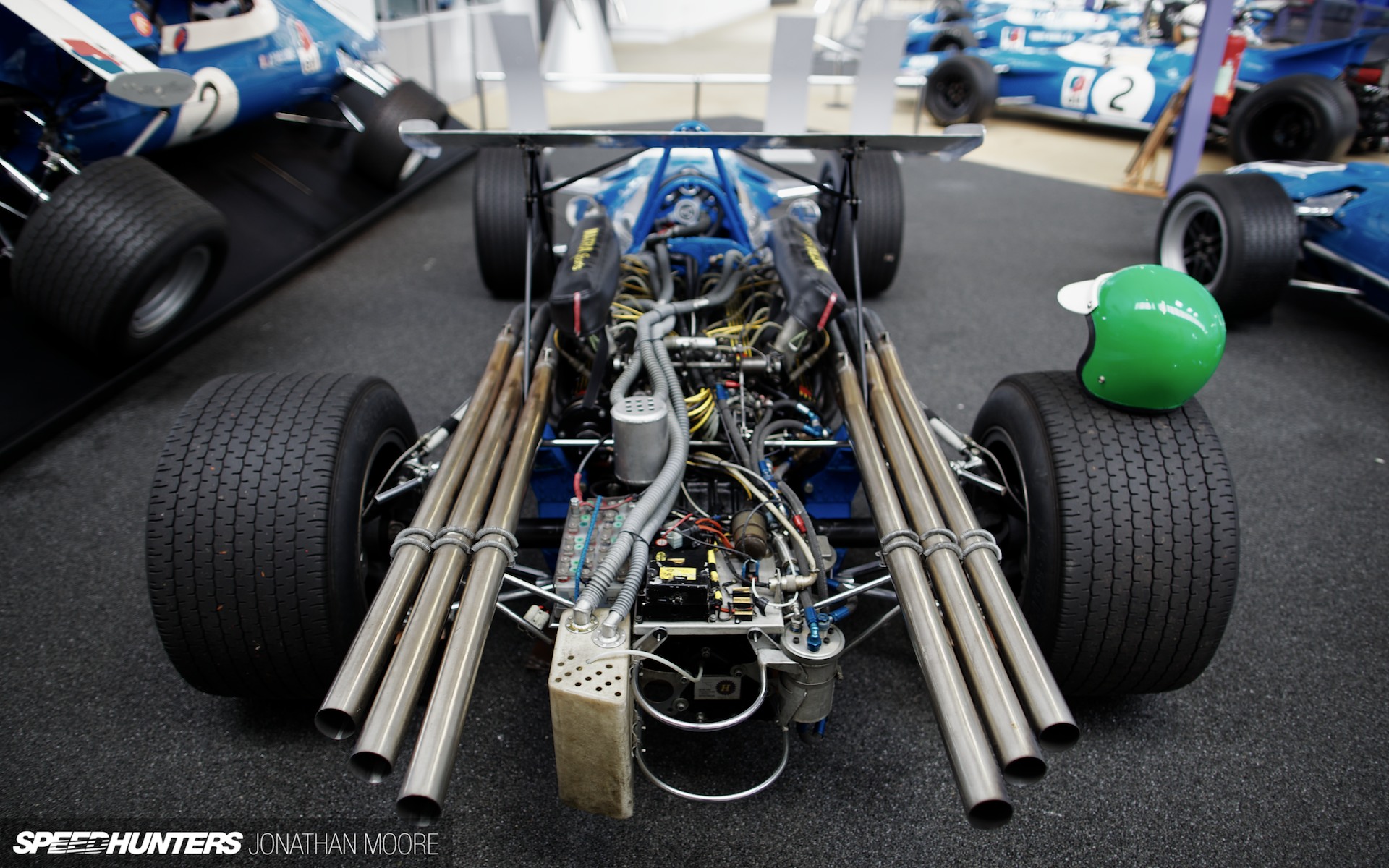









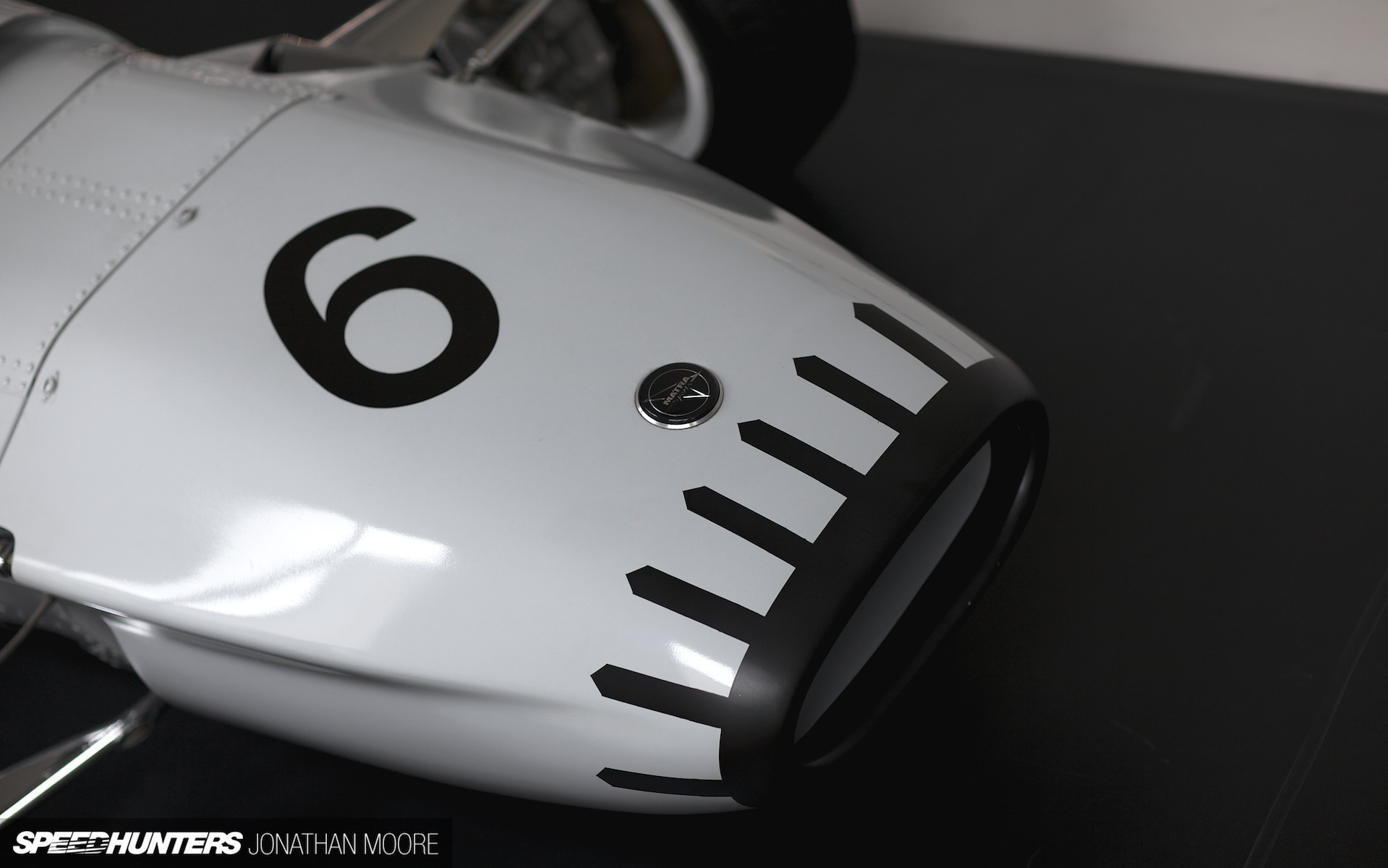
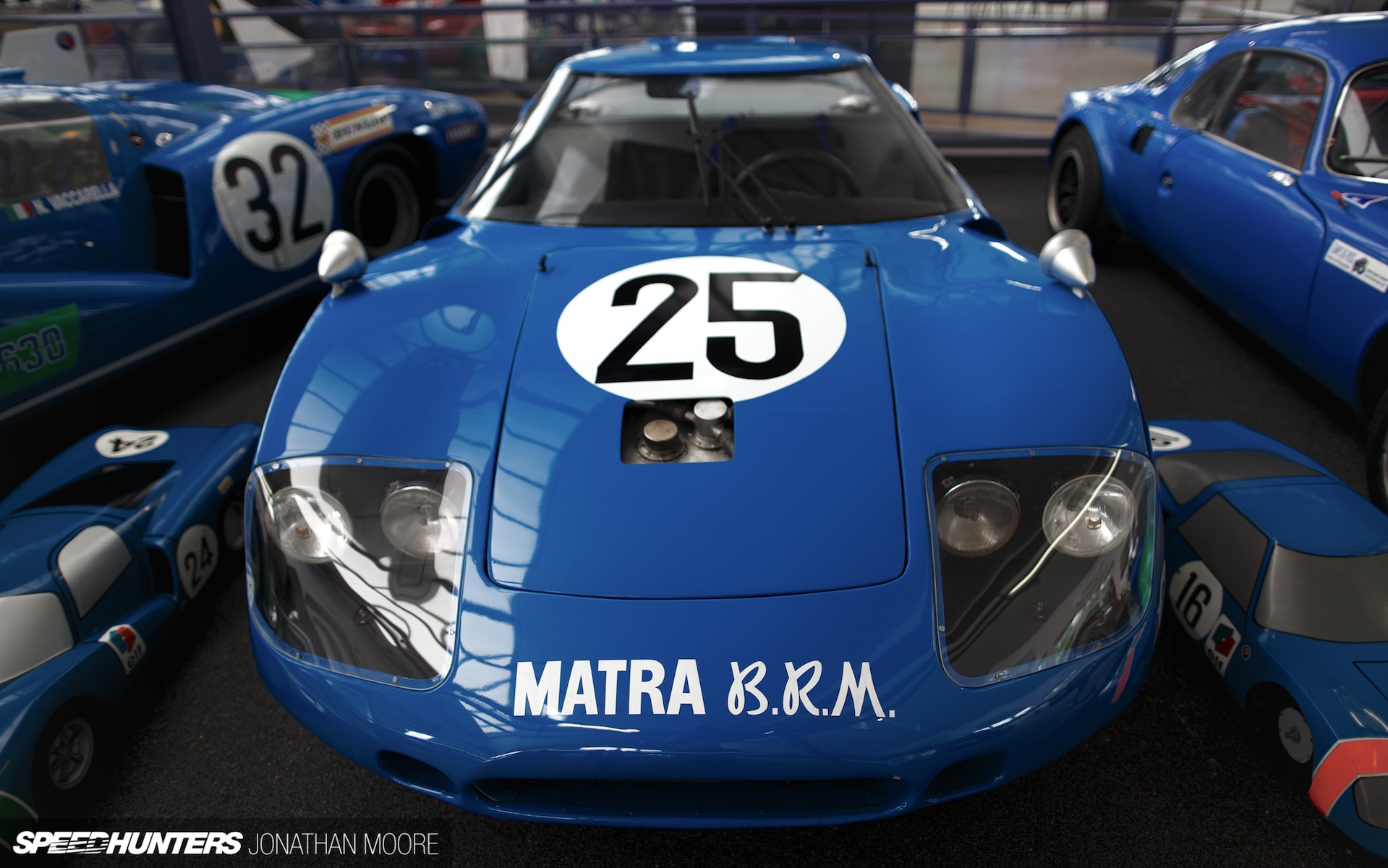
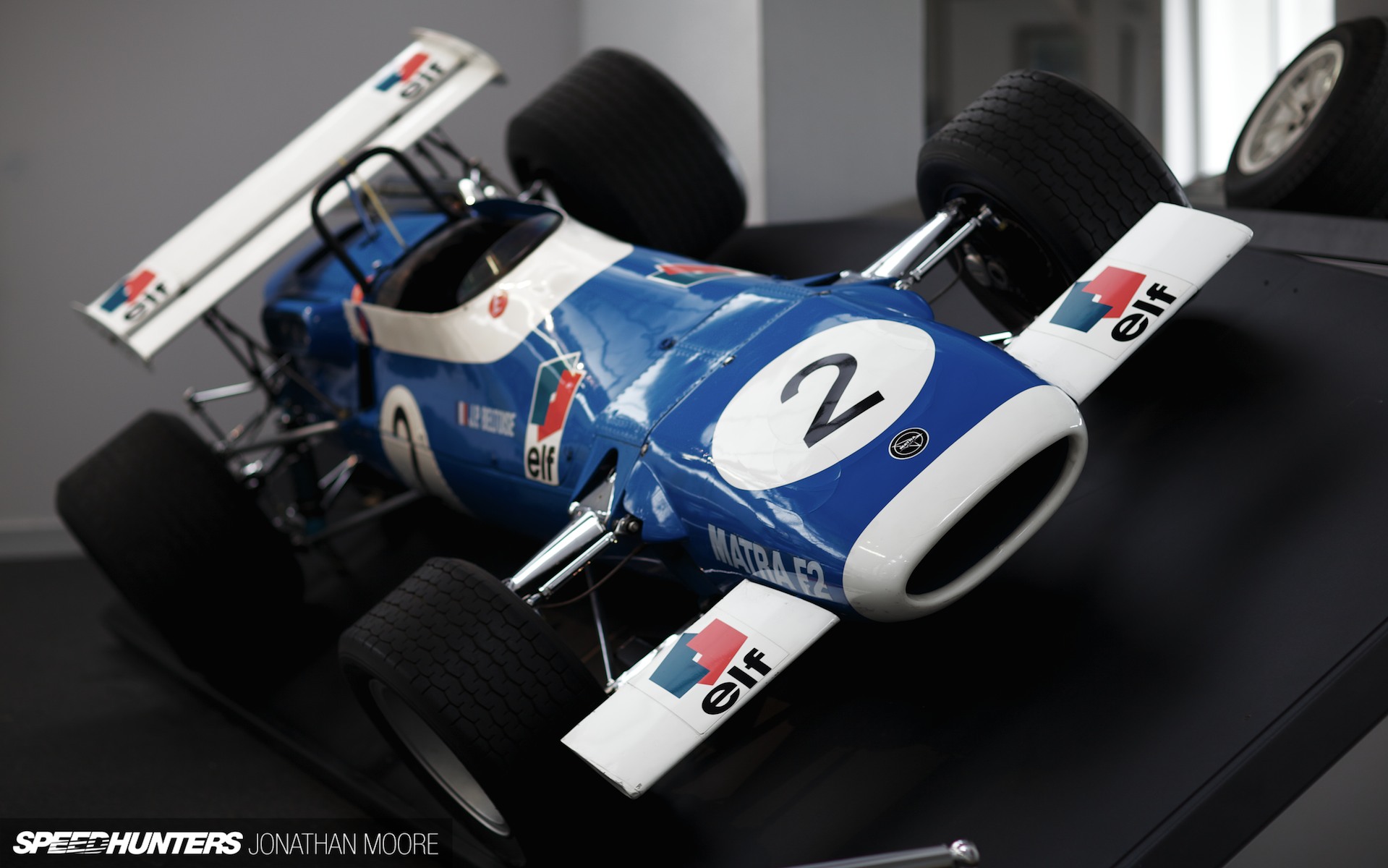
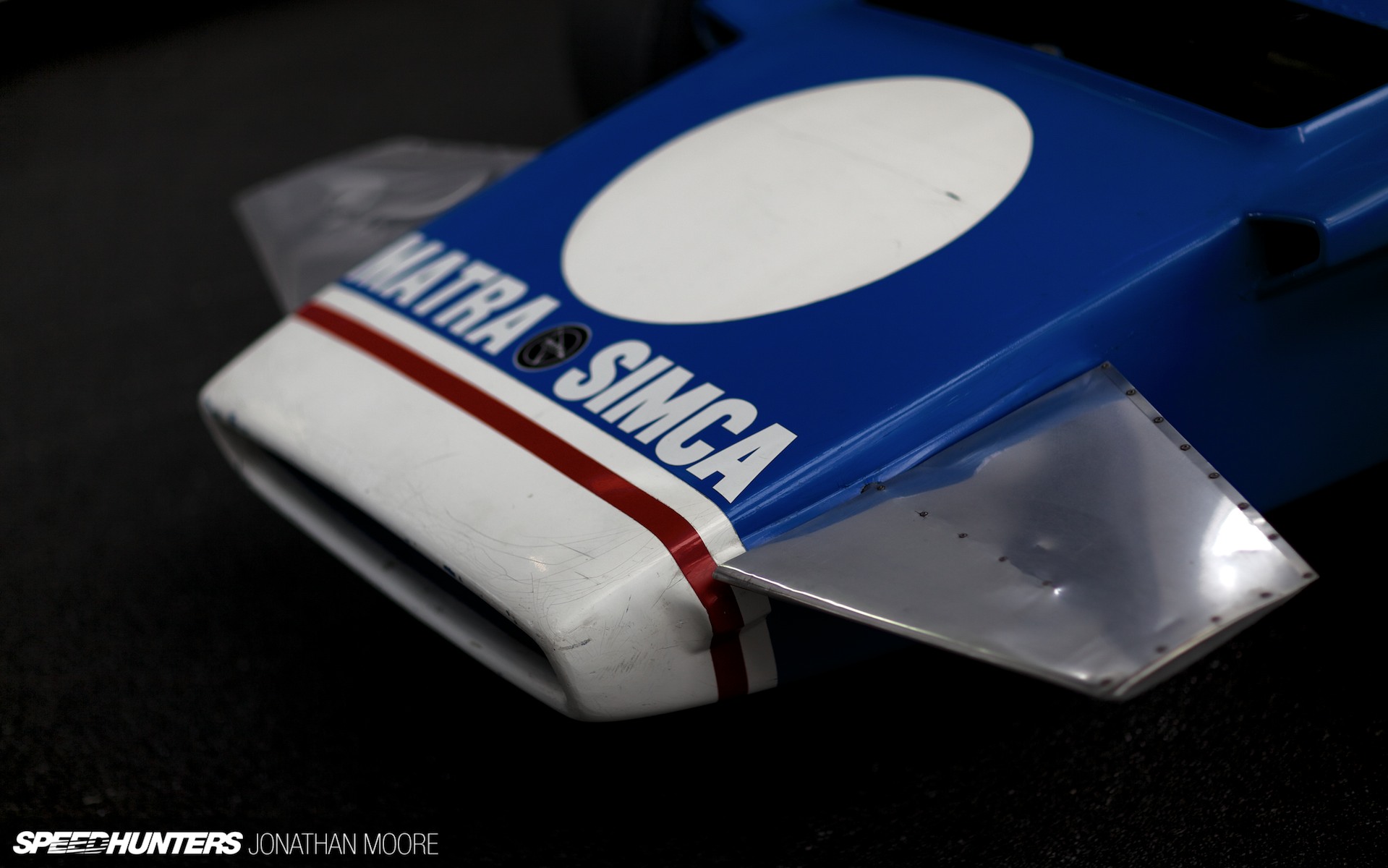




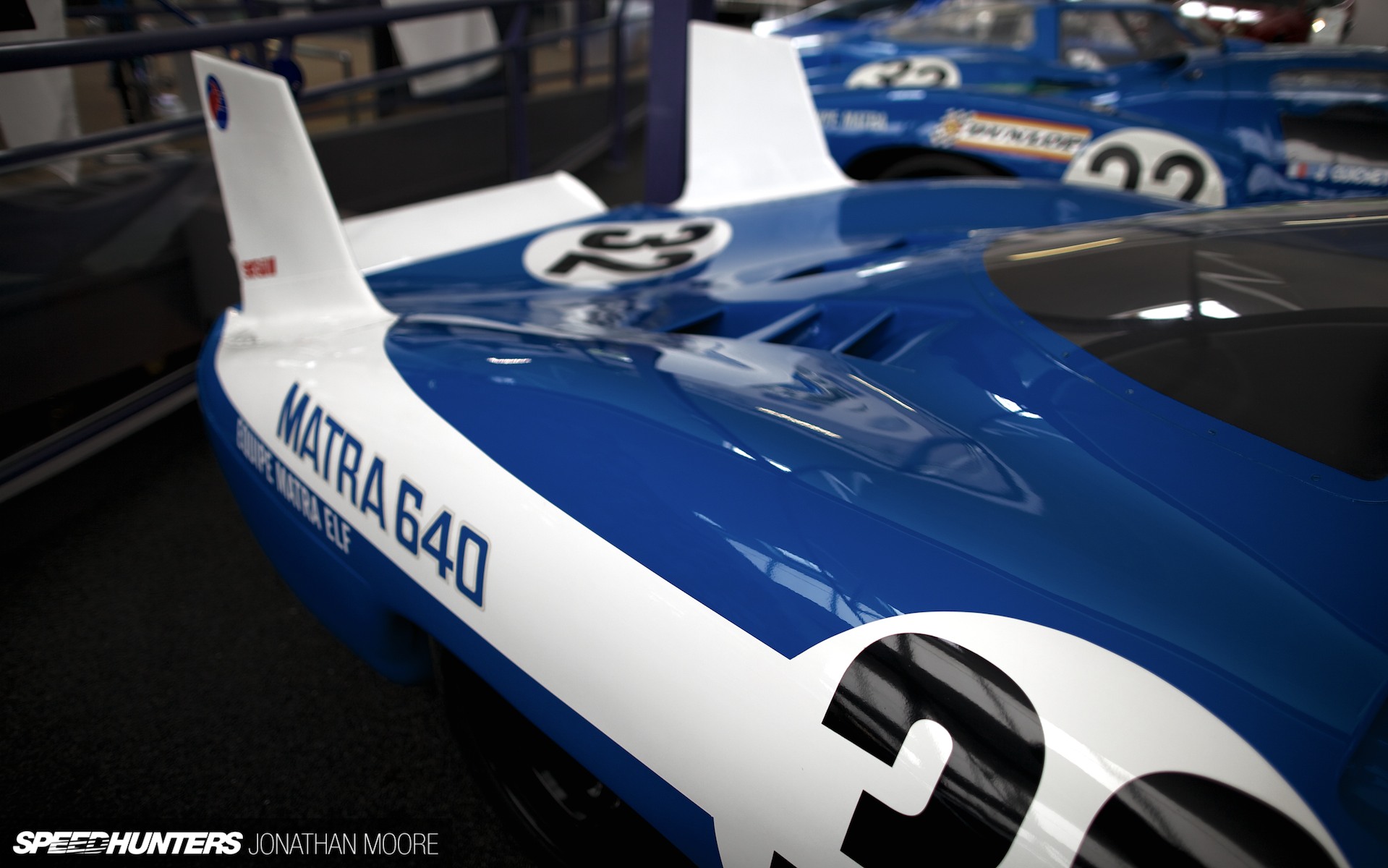


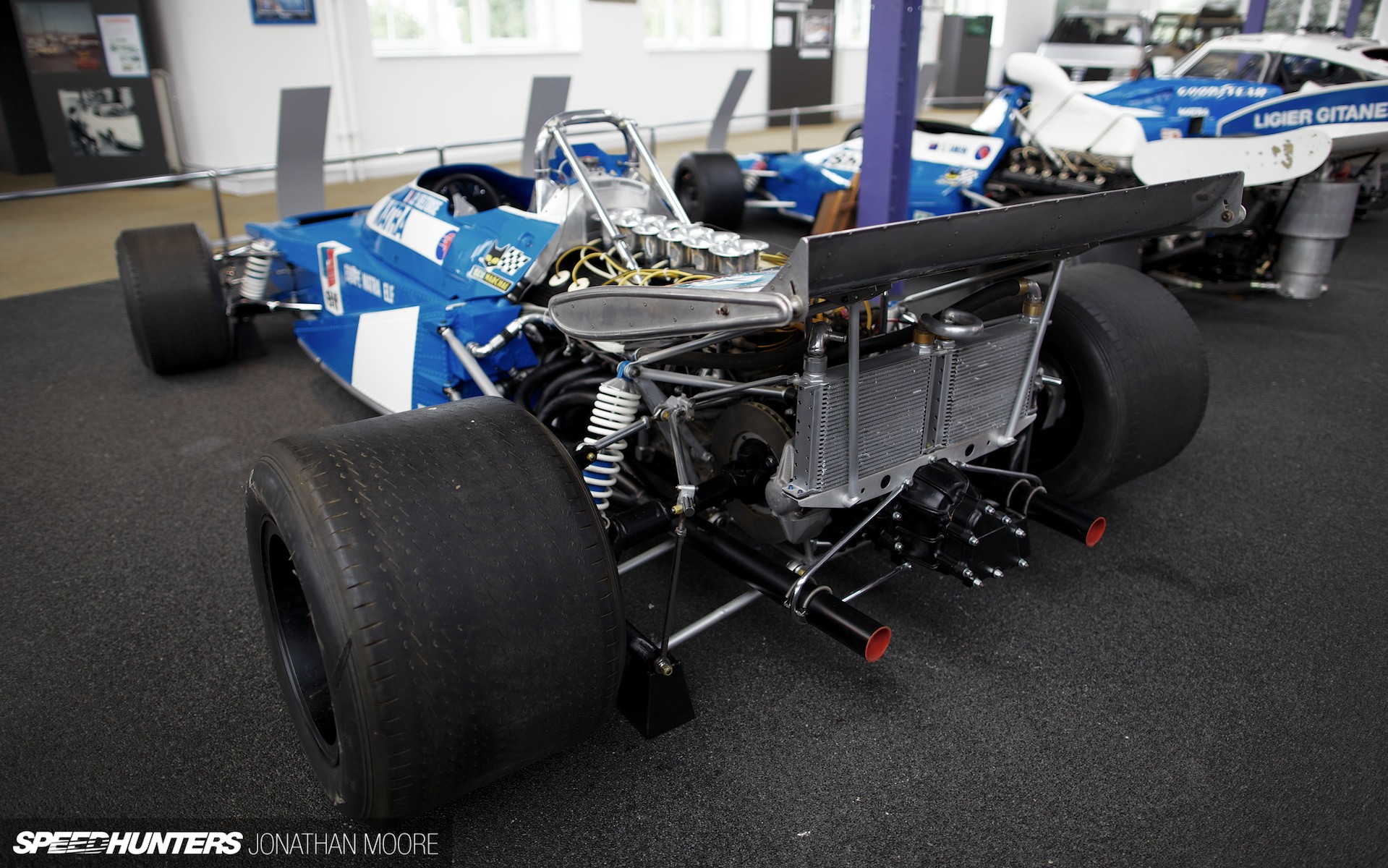
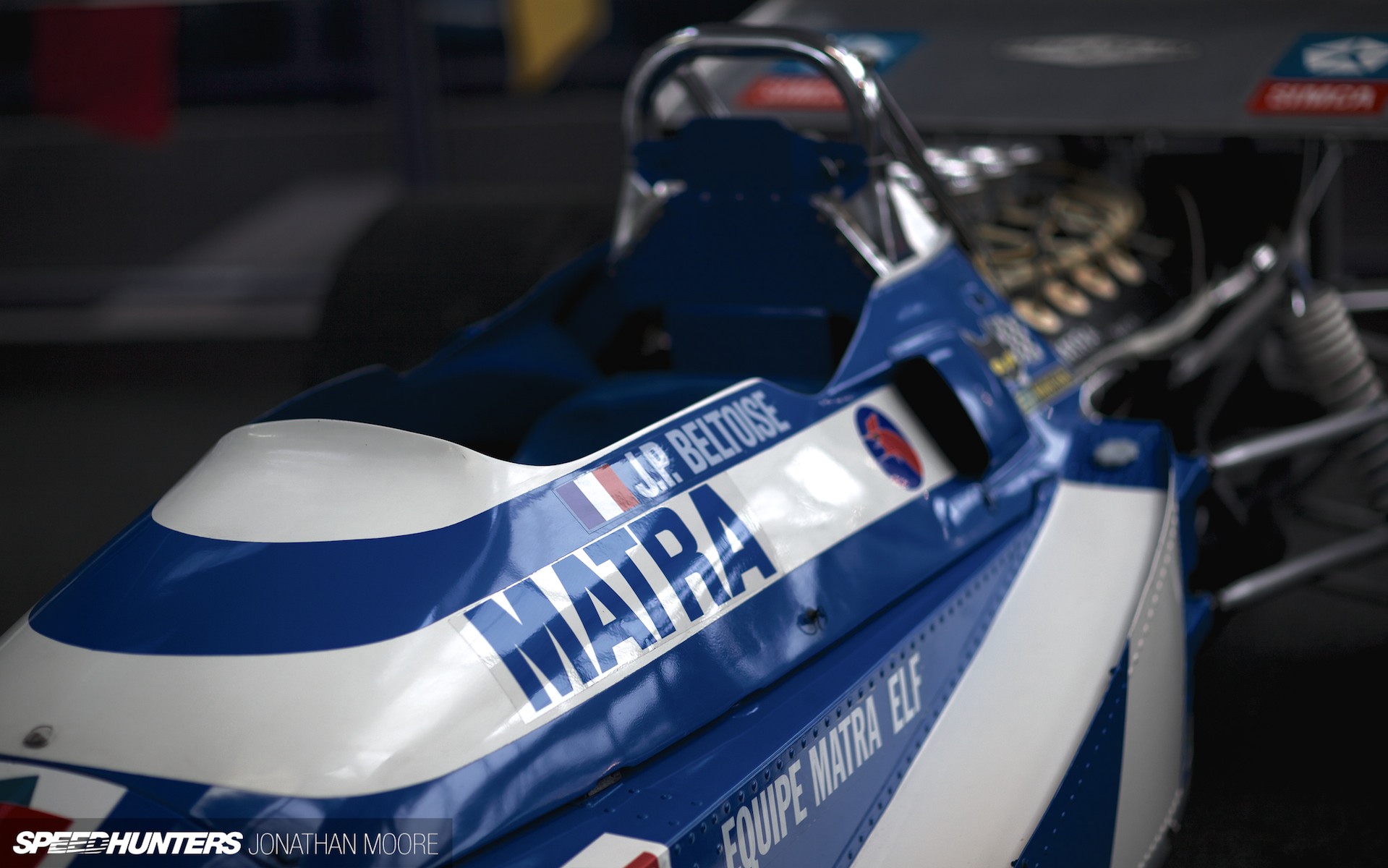


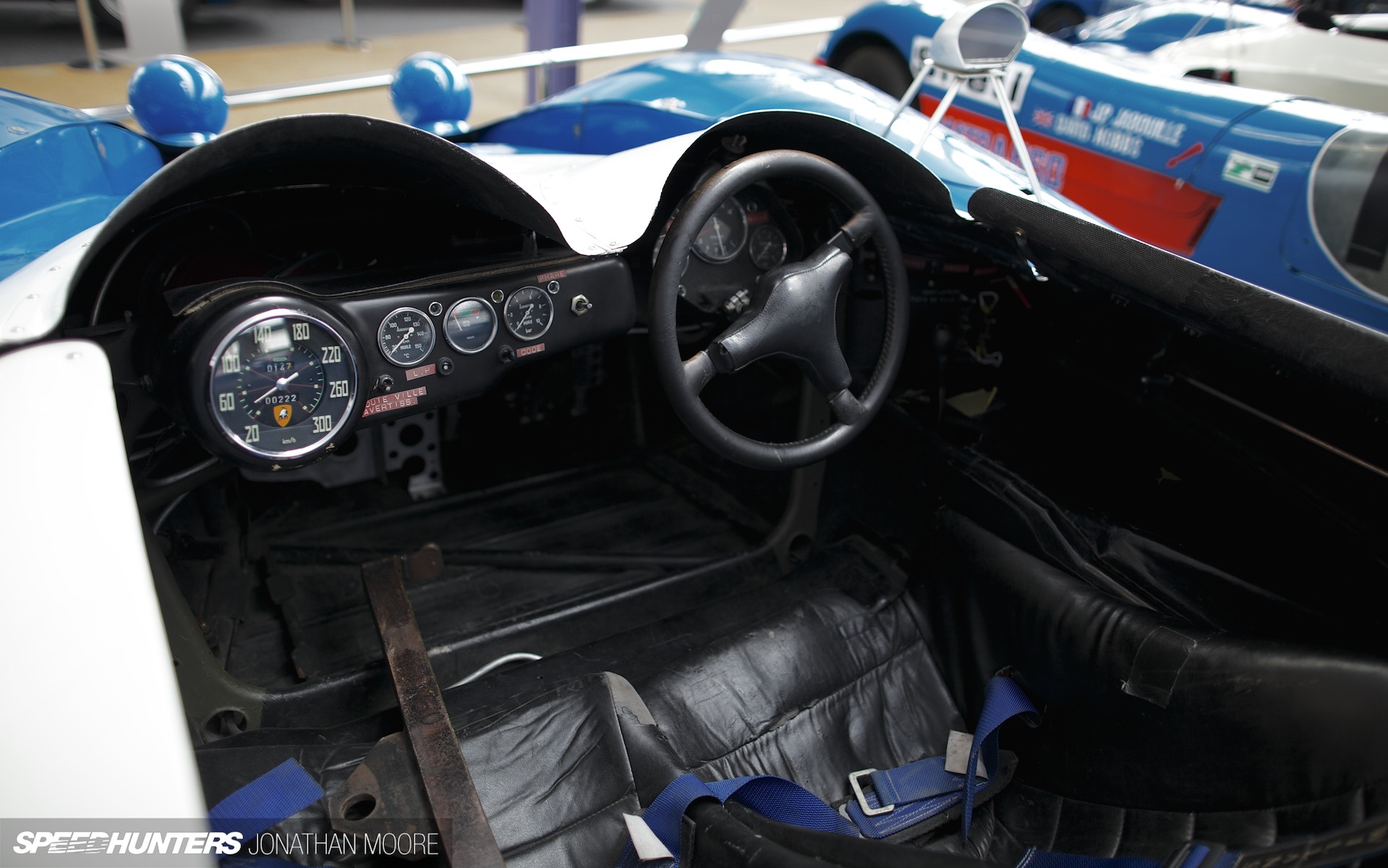
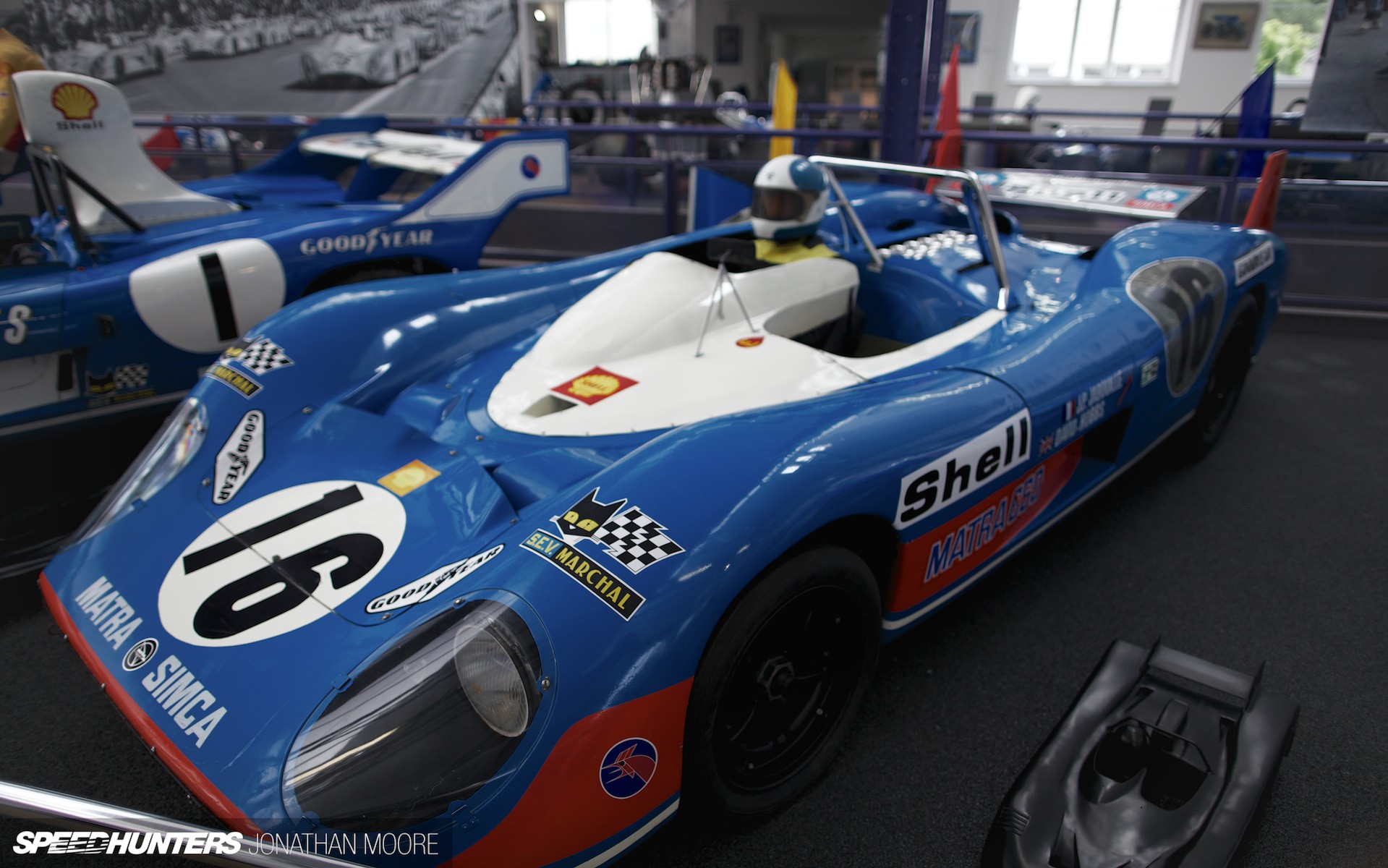
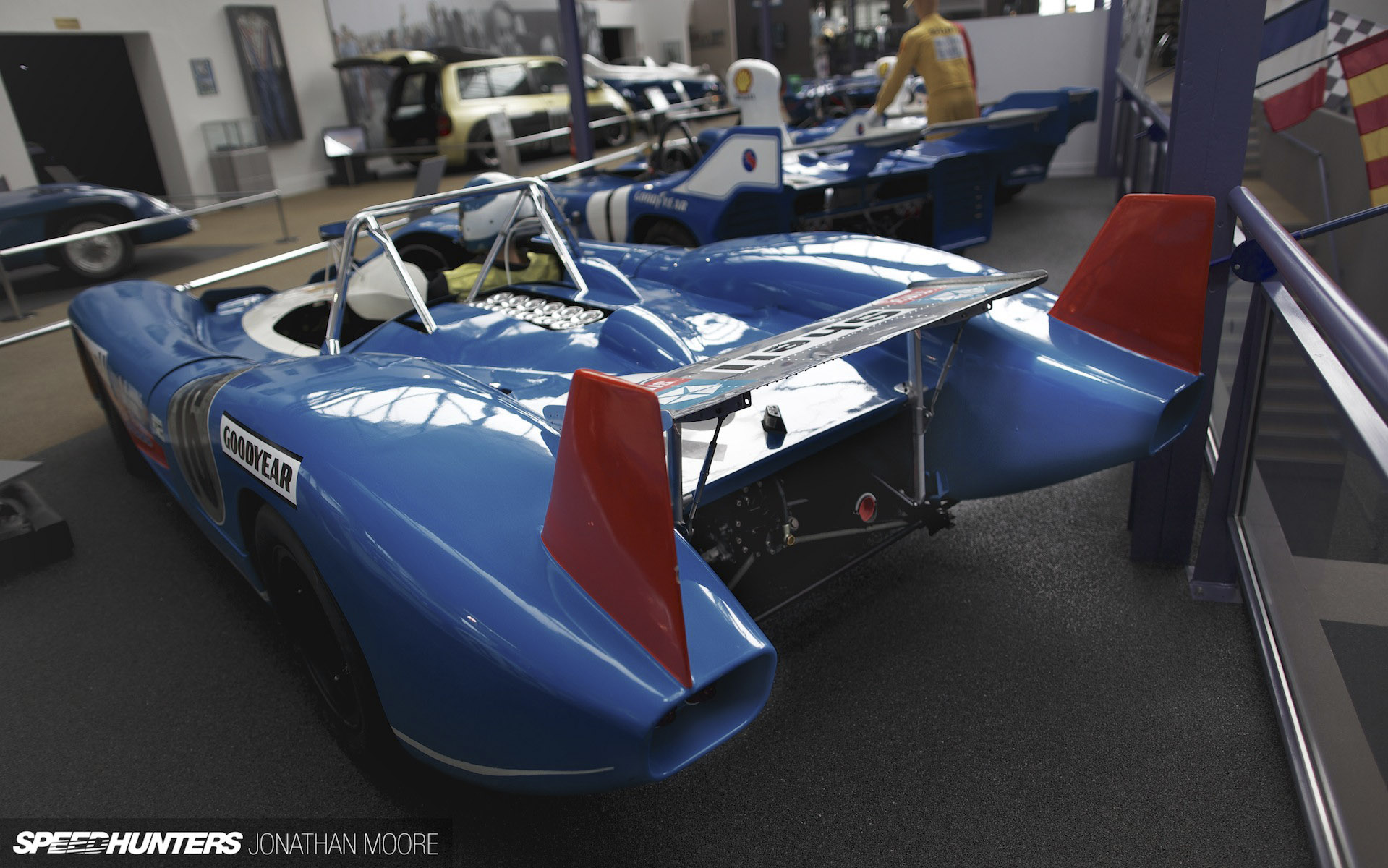


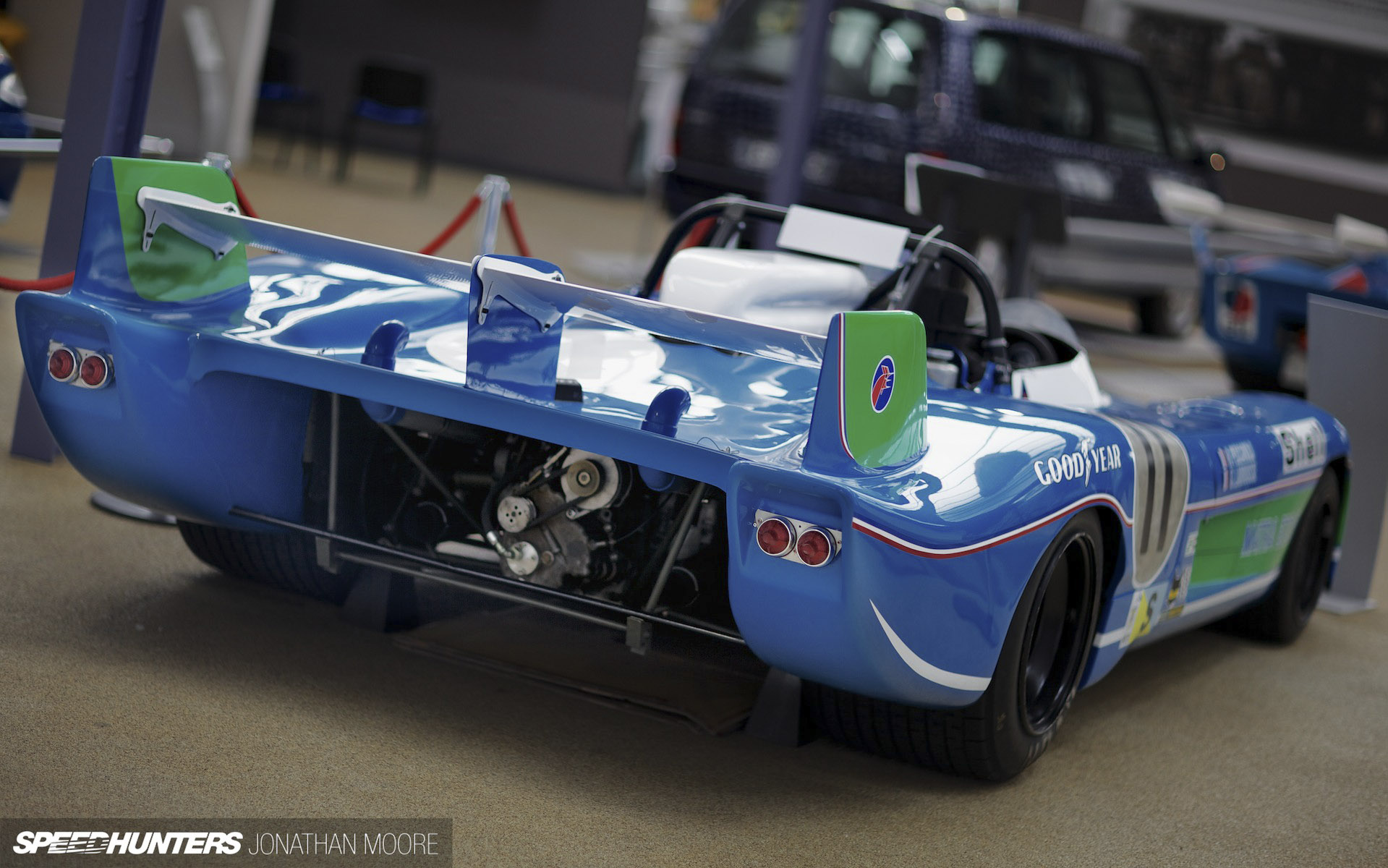

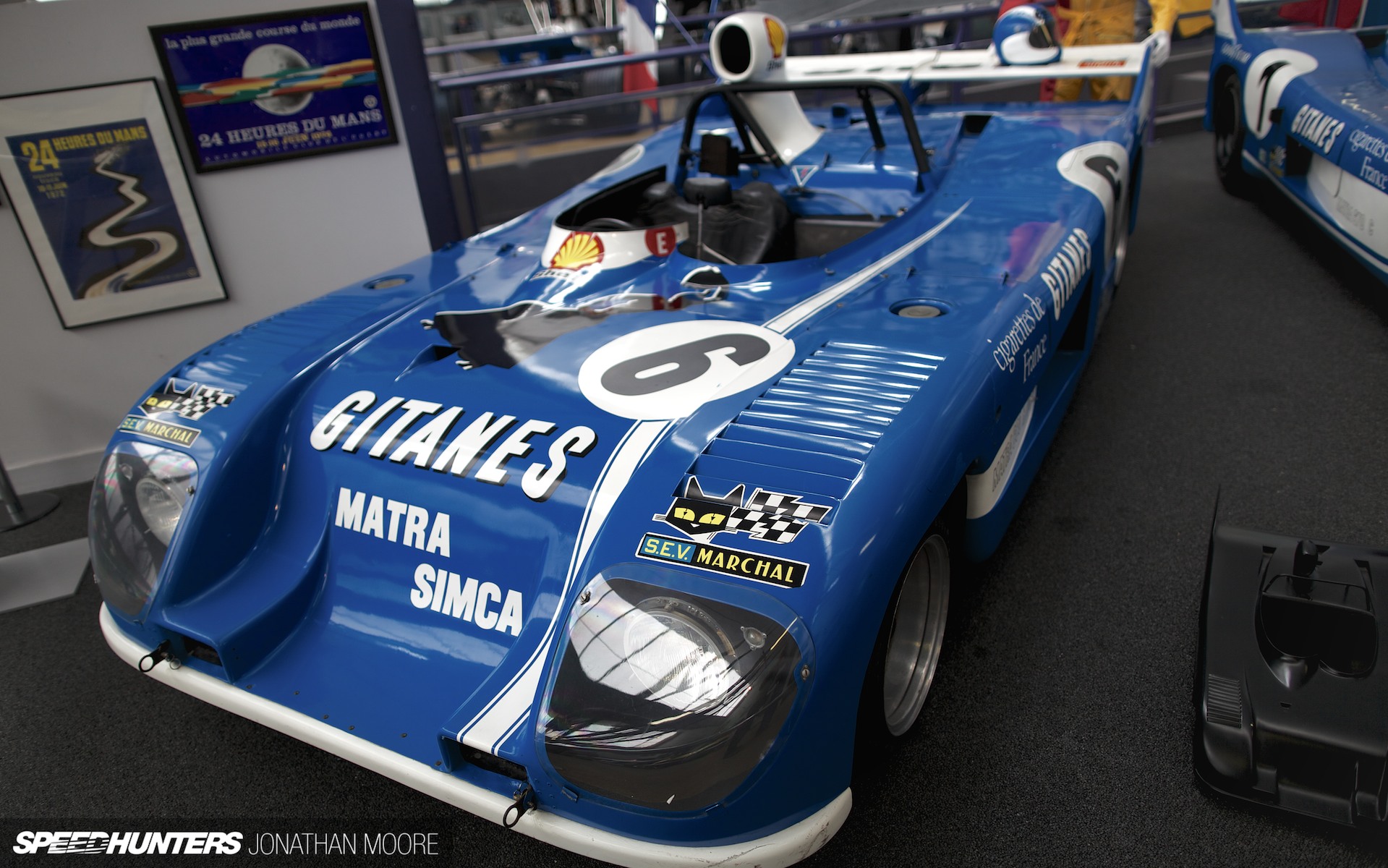
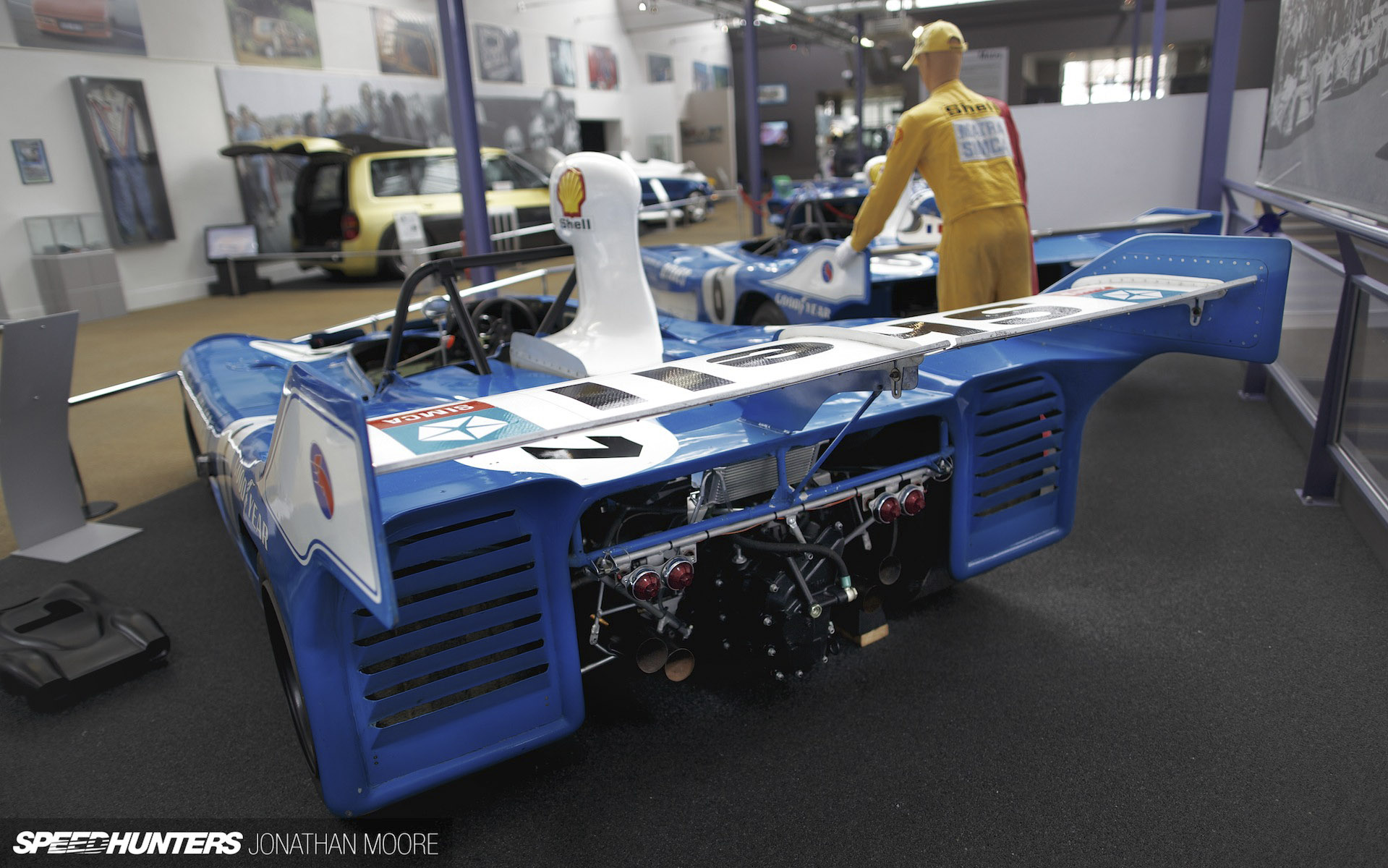




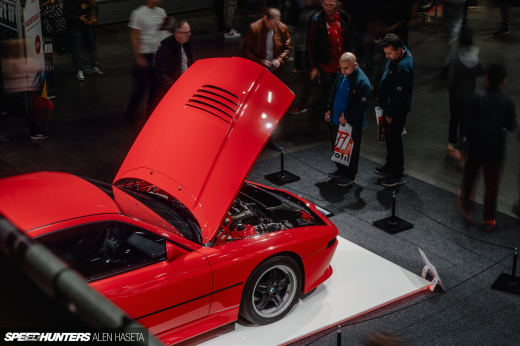






great article about some French pride those cars were fantastic racers. thank you
those cars were fantastic racers. thank you
Love the metal rear spoiler, so retro and so good looking, who needs carbon fiber?
Any more coverage on the Matra turbo V6? Also what are those exhaust pipes coming out from the wastegates for?
Articles like these are the best kinds.
Great story Jonathan. Its always great to see articles on the less commonly known marks.
The speedometer in the MS650 seems to be the same used for the Lamborghini 400GT...weird!
http://www.flickr.com/photos/geralds_1311/6475302559/
Just one of those stories where you can't help but wonder what other bizarre creations would've been greeting the world if they were still around. Very educative story Jonathan, mere shame few people still remember or learn of the genius that was Matra.
That picture of all the diecast LeMans winning cars is so cool. I just spent an hour looking up some of the real cars. Its official, one of my life goals is now to have a collection like that!
I used to drive the MS5 F3, MS620 BRM, MS630 V12 and MS 650 TdF when I was working for Matra, in several show from 2000 to 2003 and it was amazing, remembering the Le Mans pit straight with the song of the 3 l V12 at 10000 rpm was unbelievable !
ManuelGabrielli Nice spot! Very interesting... I don't of any specific link between the companies, but I'll see what I can find out.
@oldguy Thanks! Matra are a special team for France in particular, but I think are underrated for what they achieved on the world stage. I'm just writing a piece on the road cars, and there's so much more than you'd expect...
@flushpoke Ha, me too... I try not to think about it too much – and I don't dare buy even a single winning car model. It would be a slippery slope!
FB1968 Amazing! Thanks for posting – Matras are definitely cars you need to appreciate in the (very loud) flesh.
daskulthomas Stay tuned for some of the concepts that Matra beavered away on in the '90s... Such a waste of talent!
@zz Thanks! And yes, I'll have a feature focussing on Matra engines coming up soon!
EvolveWRC Yep, there's nothing wrong with metal, as I always say!
Roulianely Cheers! It was a fantastic museum to visit – one that had been on my list for quite a while.
Jonathan Moore Matra was a real pioneer in France in terms of performance.. I hope they won't make it back like Renault with Gordini... they put stripes on it and funky interior and calls it after the great Amédé Gordini, who was more an engine wizard... not very good huh ? Matra should come back with some crazy machine
Matra was a real pioneer in France in terms of performance.. I hope they won't make it back like Renault with Gordini... they put stripes on it and funky interior and calls it after the great Amédé Gordini, who was more an engine wizard... not very good huh ? Matra should come back with some crazy machine 
Need to place a matra v12 sound clip in here so people can truly hear that music.
https://www.facebook.com/photo.php?fbid=1071257664217&set=a.1071256104178.2012101.1309397936&type=3&theater
https://www.facebook.com/photo.php?fbid=1071257744219&set=a.1071256104178.2012101.1309397936&type=3&theater
https://www.facebook.com/photo.php?fbid=1071257504213&set=a.1071256104178.2012101.1309397936&type=3&theater
https://www.facebook.com/photo.php?fbid=1071257544214&set=a.1071256104178.2012101.1309397936&type=3&theater
https://www.facebook.com/photo.php?fbid=1071257824221&set=a.1071256104178.2012101.1309397936&type=3&theater
https://www.facebook.com/photo.php?v=1605928550655&set=vb.1309397936&type=3&theater
some pictures of the rebuilding of the MS650 and the sound of the V12 3l type MS12 11500 tr/mn and 420 HP, I think you could appreciate the music of it !
Awesome article Jonathan. It is great to see and here about some of this amazing motoring history. You guys should do a Abarth bit
I am in Paris on holiday at the moment (3 more days). If I had known about this great company aand their museum being relatively close to Paris, I would be attending! Great article Jonathan!
Romorantin, 3h in the south of Paris
That turbocharger V6 is pretty interesting thing. I didn't know that such thing existed.
Merci mon ami ! Great hommage about these cars wich are certainly the cause of my addiction to the blue ( maybe the Alpine's too...hehehe ). As a "proud rooster" as one of my Finish friends named me years ago , i'm (very) happy to see this glory part of french racing history in the SH pages , and wish to thank you.
Just a little mistake i think : Jean Todt never drive the MS 650 , but was J.P Depailler's co-driver. Maybe you didn't know , but the Tour de France was famous for the special mix of track events and open road special stages , which were raced like...."rally" stages. Todt have always been a co-driver ( and a good one for sure ) , but he certainly never had the talent to drive such a "missile" on open road nor tracks.
As the true Alfa Romeo lover you are , i could have bet that you knew a little more about such specifics event like the Tour de France auto , or the "Giro d'Italia" ( guess when the Lancia beta GR5 raced it ?.....hehehe ).
Always a pleasure to read you and...enjoy your wonderfull shots....ton ami Markus
nissagtx Ah, of course, thanks Markus! That would make sense for Todt; I did wonder! I am well aware of the Giro, but I must admit I'm not that up on the history of the Tour Auto. I need to remedy that!
zackspeed333 We should, you're right!
K911K Ha, I'm saving that for the engines story!
http://www.dailymotion.com/video/x15opca_ms670-17092010_sport
Jonathan Moore this video homemade (sorry for quality) of the first run of the MS670B Le Mans 1973 after restauration, just for the sound !
Jonathan Moore zackspeed333 One for the list Mr Moore
I remember it was said some years ago (before the sad demise of the company) that of all the teams who had left F1, the most likely to pull off a successful return to F1 would be Matra. Sadly I forget who is attributed with the quote, possibly Jackie Stewart, who of course a) knew the team well and b) knows from personal experience what that entails.
Many thanks for your great articles and photographs, a real nostalgia trip for me. I have owned practically every road car Matra produced and visited Romorantin several times. Well worth a detour if you are passing.
My pictures from Le Mans 2012 where we had three Matra prototypes on the track ...
http://www.sorth.dk/p/20120610/index.html" rel="dofollow" target="_blank">http://www.sorth.dk/p/20120610/index.html
For Le Mans afficianados, here are my pictures from Le Mans from 2004 onwards - always tried to find something Matra related : e.g. http://www.sorth.dk/p/20050618/Med/dsc_4039.html
http://www.sorth.dk/p/20130618/index.html
http://www.sorth.dk/p/20120610/index.html" rel="dofollow" target="_blank">http://www.sorth.dk/p/20120610/index.html
http://www.sorth.dk/p/20110607-12/index.html
http://www.sorth.dk/p/20100605-13/index.html
http://www.sorth.dk/p/20090614/index.html
http://www.sorth.dk/p/20080614/index.html
http://www.sorth.dk/p/20070611-17/index.html
http://www.sorth.dk/p/20060613-21/index.html
http://www.sorth.dk/p/20050618/index.html
http://www.sorth.dk/p/20040609-15/index.html
All my own pictures, if you use them just include info on where you got them.
/Lennart Sorth